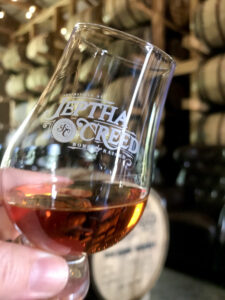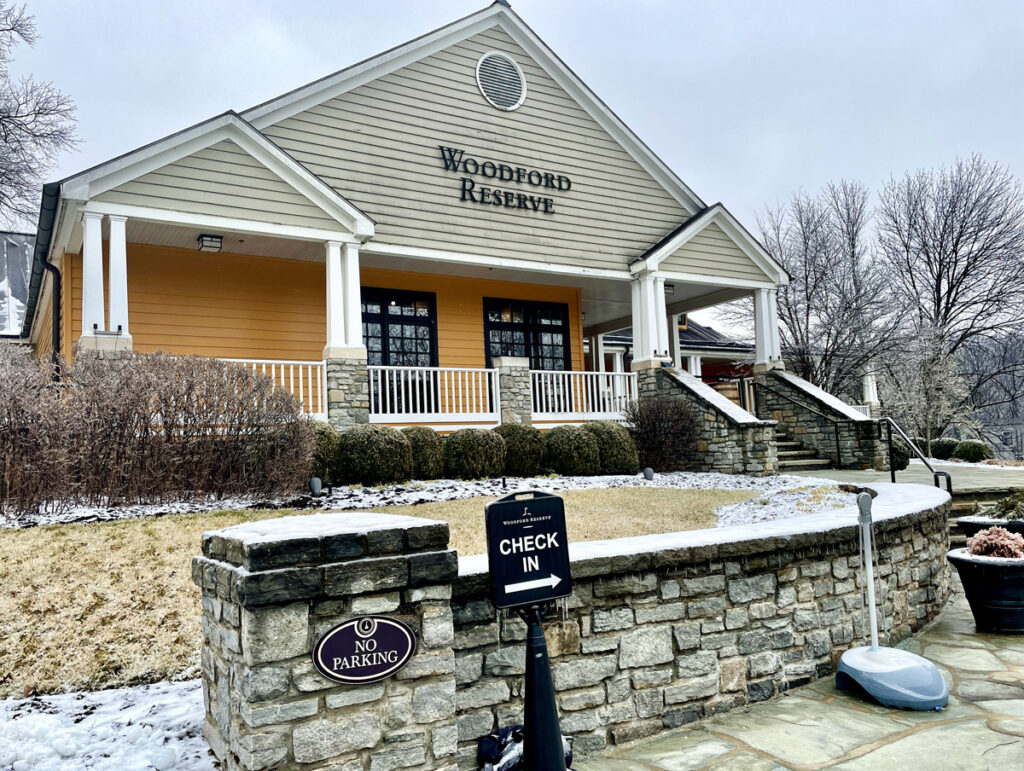With so much information available at our fingertips, sometimes it’s hard to find the simple facts — the basics, if you will — of a given subject. And if that subject was given a two-finger pour of straight Kentucky bourbon and asked to explain it to a group of people, would they be able to? Would you?
Here are some of the basics of bourbon whiskey, aimed at giving you a clearer picture of what this American brown spirit is and why it’s become so popular. Hint: It’s quite tasty.
Q: Does bourbon have to be made in Kentucky?
A: No. It can be made in any state in America. That being said, 95% of it is indeed made in Kentucky.
Q: Can bourbon be made outside of the United States?
A: No. It can only be called bourbon if it’s made in America.
Q: Does bourbon continue to age inside the bottle?
A: No. Once bourbon is removed from the barrel, it stops aging.
Q: How long does bourbon have to age?
A: There is no rule on how long bourbon must age once put into a barrel, however, to be considered a “straight bourbon,” it must age for at least two years. Most bourbons age between four and 10 years.
Q: Is there coloring added to bourbon?

A: Absolutely not. Bourbon cannot contain any added colors or flavors. In fact, the only thing you can add to bourbon after it leaves the barrel is water to proof it down.
The distillate goes into the barrel completely clear (think vodka) and comes out amber due to its interaction with the charred wood while it sits inside the barrel.
During the summer months, the bourbon swells inside and mingles deeply with the barrel, and during the winter months, it constricts.
A younger bourbon will have less of an amber hue because it has spent less time interacting with the wood.
Q: What makes whiskey a bourbon?
A: All bourbon is whiskey, but not all whiskey is bourbon. There are six hard and fast rules that separate bourbon from all other whiskeys, as defined by the U.S. Congress in 1964:
- It can only be made in America.
- The mash bill must contain at least 51% corn.
- The distillate must be put into a new, charred oak container (typically a barrel/cask).
- It is distilled no higher than 160 proof.
- It is put into a barrel no higher than 125 proof.
- It is bottled at no less than 80 proof.

Q: Why so much corn in the mash bill?
A: It’s simple: Corn grows very well in America, and that’s what the early pioneers could easily plant, harvest and distill in a season. Corn is sweet by nature, thus making bourbon one of the sweeter whiskeys in the category.
Q: How many barrels go into a “small batch” bourbon?
A: There is no legal definition of a small batch bourbon, so it’s up to each distiller how many barrels he or she uses to create the product. A “small batch” at Jim Beam might be 500 barrels, while at a craft distillery like Widow Jane, it might be five barrels.
Q: What does Bottled-In-Bond mean?
A: Some bourbons have “Bottled-In-Bond” on the label, which means it has been bottled according to a set of legal requirements first sanctioned by the Bottled-In-Bond Act of 1897. The bourbon inside the bottle must be a product of one distillation season by one distiller at one distillery. It also has to be aged in a federally bonded warehouse for at least four years and be bottled at 100 proof.
The act came about because a lot of bourbon and whiskey at the time was being fabricated — for instance, taking vodka and adding tobacco spit, iodine or other unsavory and harmful liquids to color it brown. The Bottled-In-Bond tax seal and stamp guarantees the bourbon’s authenticity.
Q: How much bourbon evaporates each year when aging?
A: Because of the extreme temperatures in Kentucky (80-90F-degree summers/0-20F-degree winters), the bourbon aging in the barrels evaporates quite a bit. They lose about 30-40% per barrel that ages about five years.
The older it is, obviously the more it’ll lose to evaporation (also called “angel’s share”). Other factors include where it’s located in the rick house (top floors get hotter, so the barrels up there will lose more), age and what proof it was entered in the barrel.
Because of this, older bourbons tend to be more premium in price and taste. In fact, each year a bourbon ages, its value increases.
Q: Is the barrel the same thing as a cask?
A: Yes. Barrel and cask mean the same thing.
Q: What does char level mean?
A: Sometimes in a bourbon’s tasting notes, you will see something called “char level.” This is the level at which the new white oak barrel was burned. Char levels can range from 1 to 4, with 3-4 being the standard for most bourbon brands.
Level 1 is a 15-second burn; Level 2 is a 30-second burn; Level 3 is a 35-second burn; and Level 4, also known as alligator char, is a 55-second burn. The level of char will affect both the flavor and color of the bourbon.
Q: What is a rick house?

A: A rick house, also referred to as a rack house, is a building that stores aging barrels. They are also known as whiskey aging warehouses. The rick system is a method of storing barrels on their side in a grid.
Frederick Stitzel first patented the rick method of barrel storing in 1879. Barrels can also age in a vertical position, known as palletized aging.
Q: Is there mass-produced bourbon?
A: There really isn’t a mass-produced bourbon — because each bourbon comes from a distillery and every distillery has a story. Now, there are distilleries that sell lots of bourbon — in fact, the biggest bourbon producer is Jim Beam, followed by Evan Williams (owned by Heaven Hill). But even these wouldn’t be considered “mass produced.”
All bourbon has to me made the same way, so whether you’re making 20,000 barrels or 2,000, you can’t jump through any hoops to get it done faster.
While bourbon doesn’t have to be made in Kentucky, about 95% of it is, and all the most well-known brands are located there for good reason.
Q: What’s the difference between bourbon and scotch?
A: While bourbon and scotch are both considered whiskey, the spirits are quite different in mash bill, cask requirements, aging, environment, and even in the way each spell the word “whiskey.” The general rule of thumb is, if a country has an “e” in its name, then it’s spelled whiskey. But if it doesn’t have an “e,” as in Scotland and Japan, it’s spelled whisky.
And that’s just the beginning of the differences. While bourbon’s mash bill predominantly contains corn — at least 51% by law — rye/wheat and just a small percentage of malted barley, scotch’s mash bill is often 100% malted barley (some brands use cereal grains as well).
And the barley in scotch has usually been smoked/dried by peat, which is partially decayed vegetation and organic matter found in Europe. The smoky flavors in scotch come from that peat.
Bourbon distillate must be put into a new, charred oak barrel to age, while scotch is put into used barrels, thus watering down, so to speak, the intense flavors imparted by the barrel onto the spirit. And finally, one of the biggest differences between the two whiskeys is age.
There is no law stating how long bourbon must age in a barrel, but to call it “straight bourbon,” it must rest at least two years in a barrel. Most distilleries age their bourbon at least four years, and many believe bourbon’s sweet spot lies between six and 12 years.
Of course there are older bourbons — like the highly coveted Pappy Van Winkle 23-Year — but these are quite rare in the bourbon world, as the longer the bourbon stays in the barrel, the more oak notes it picks up and the more it evaporates.
Scotch, on the other hand, must be aged at least three years in used casks, but a majority of it ages for much, much longer — anywhere between 15 and 30+ years. The two main reasons for this are the colder climate of Scotland creating less evaporation and the fact that the spirit is aging in used barrels.
If we’re looking at the two spirits from an investment standpoint, the fact that bourbon takes less time to mature is a significant factor in deciding which spirit to purchase.
Q: How many distilleries are in Kentucky?

A: There are more than 50 distilleries operating in Kentucky today, with more than 10 million barrels of bourbon aging in the state. That’s about two barrels for every Kentucky resident.



